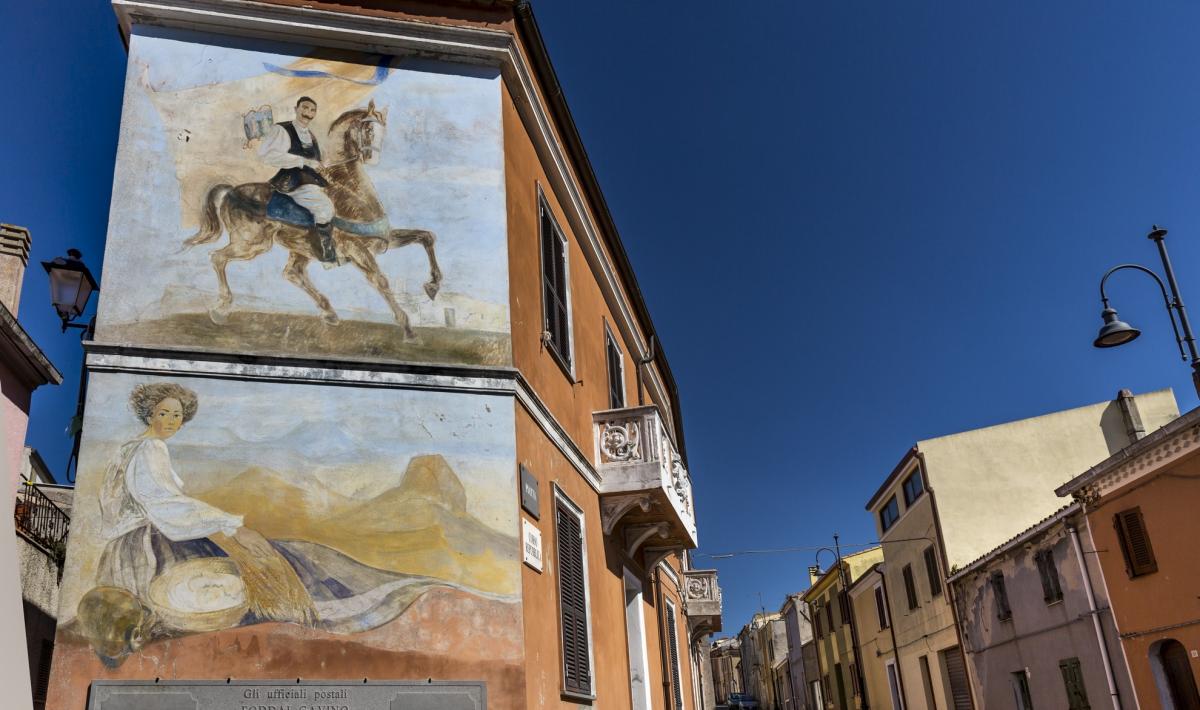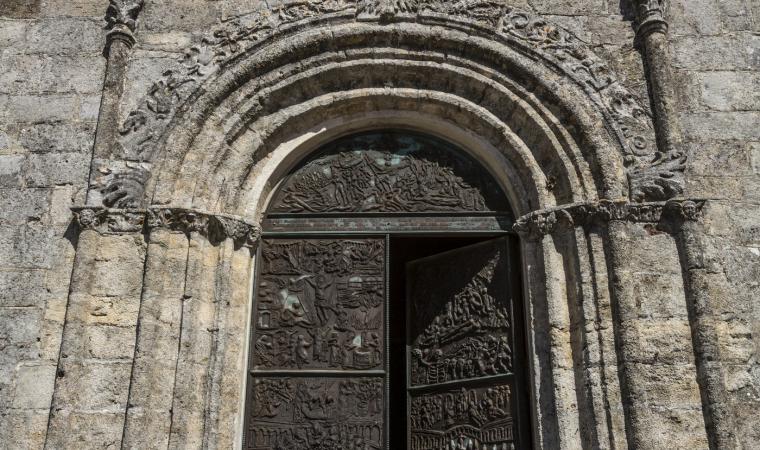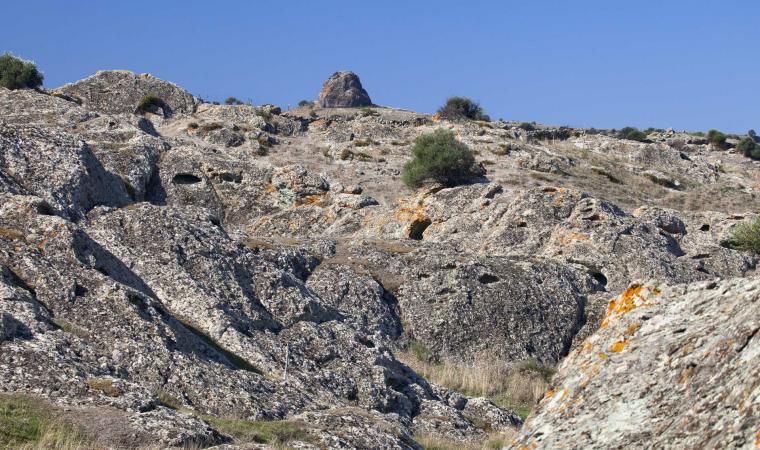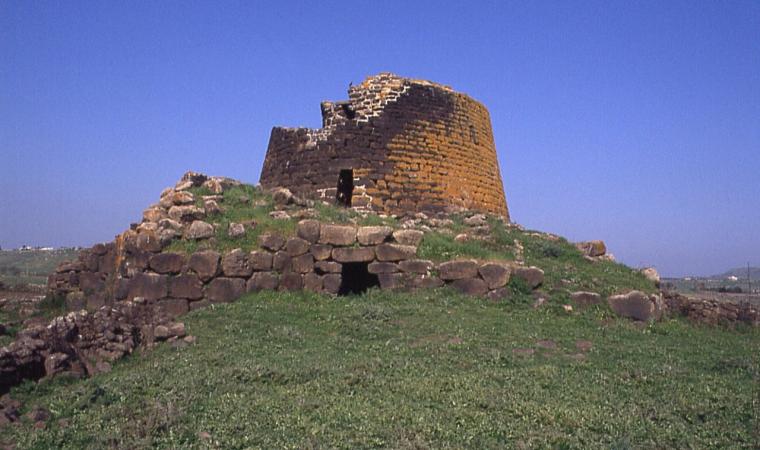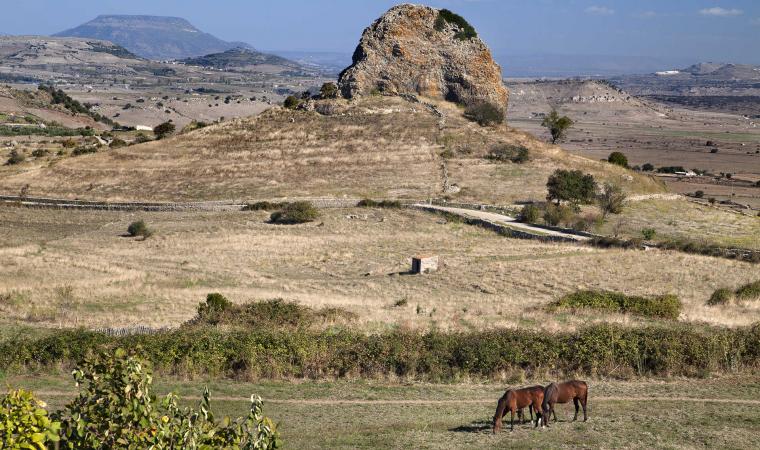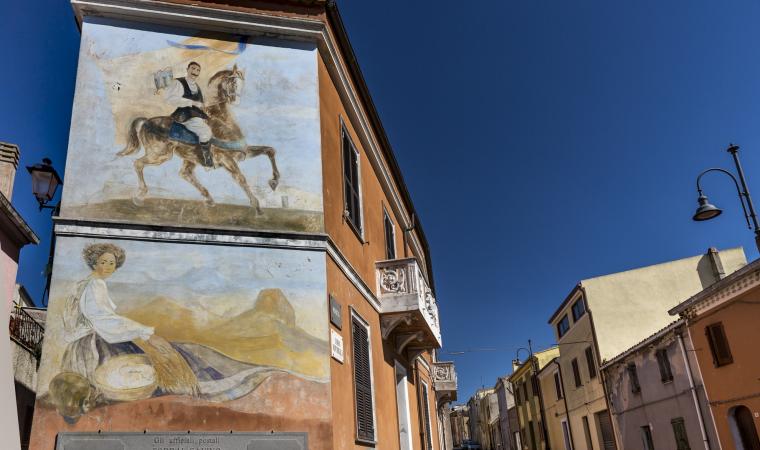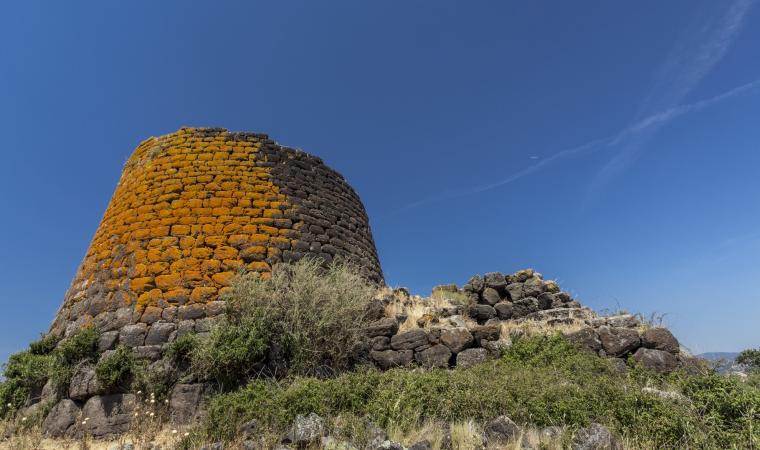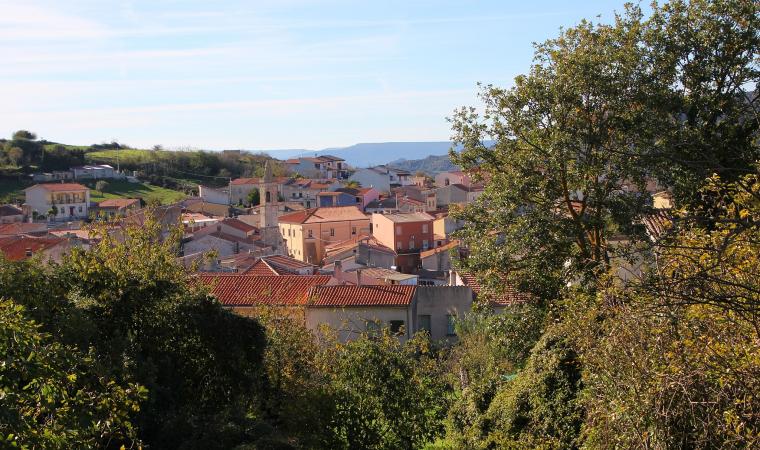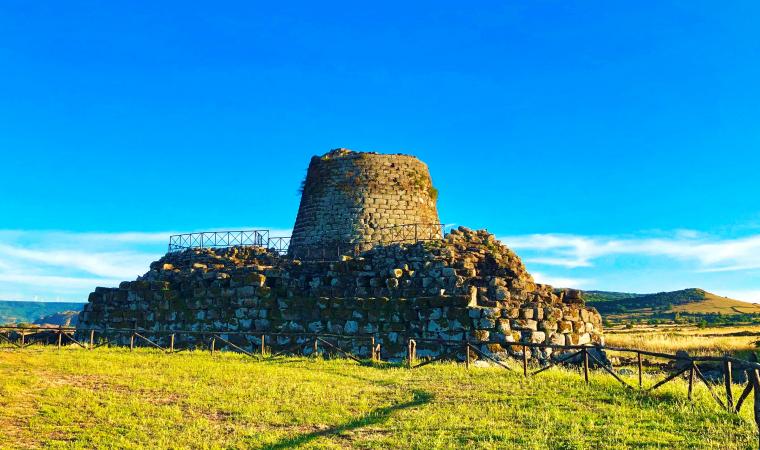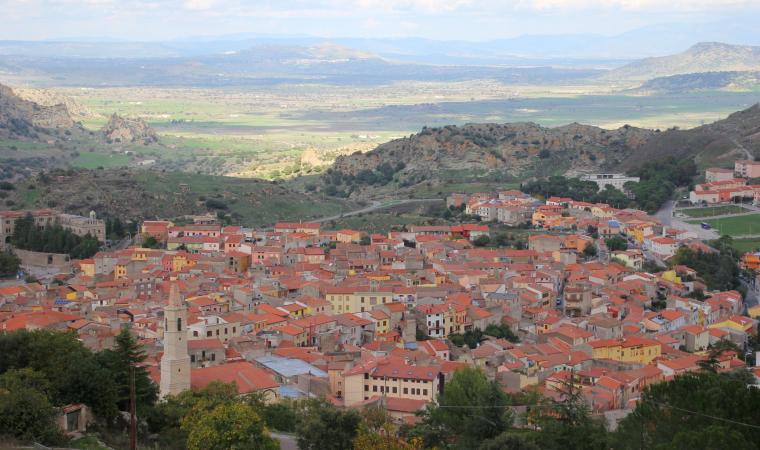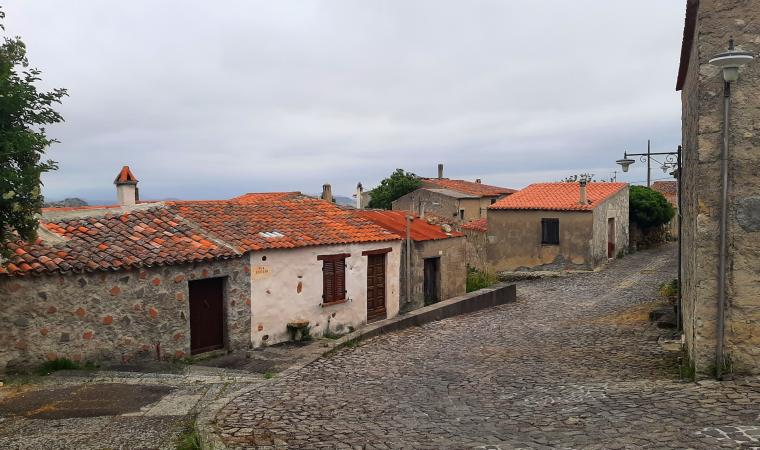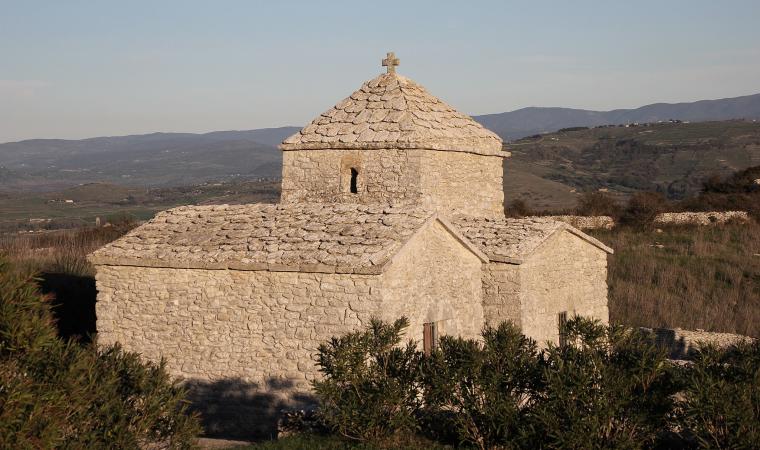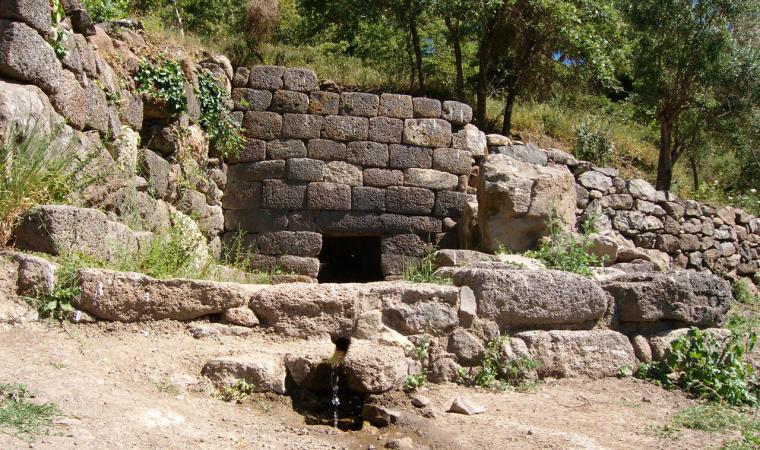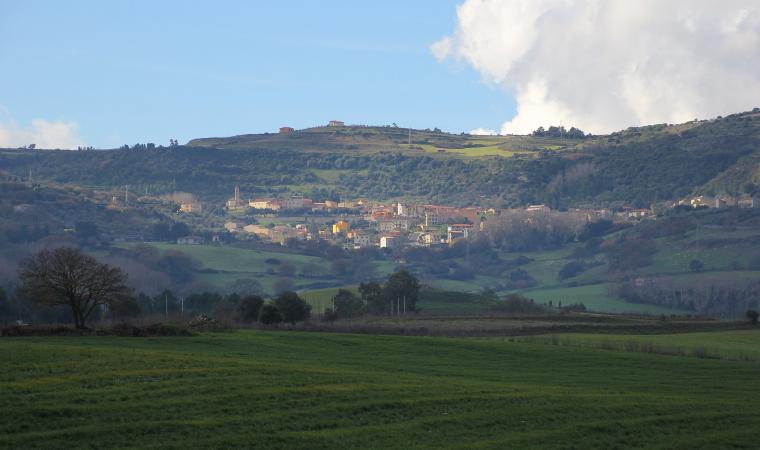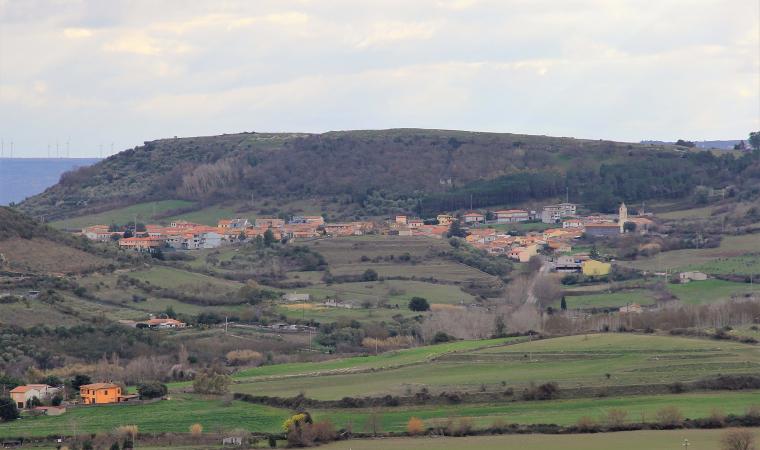High up on the summit of a basalt plateau, Giave is a little village with less than 600 inhabitants in the Meilogu, subregion of the Logudoro region. Its territory is delimited by the plateaus of Campeda to the south, Monteacuto to the east and Sassari to the north. The Romans colonised the area by creating a bifurcation in the road that joined Caralis to Turris on one side and to Olbia on the other. In the old town centre, there are still sections of the late-medieval village: in the centre, you will see the bell tower of the parish church of Sant'Andrea, which was founded in the 16th century, renovated in 1788 and later enriched by a bronze portal. There are also other churches, including that of Santa Croce, in which you can admire an ancient wooden altar, the church of San Sisto, in a panoramic position, and that of San Cosma and San Damiano, a destination for pilgrimages. Through the pinnettas, typical stone huts with conical wooden roofs, used as shelters for the shepherds, you will be able to enjoy itineraries on which you will discover pastoral culture.
A land of extinct volcanos, the unusual landscape around Giave stands out with its natural protected monument of the volcanic craters of Meilogu, small high ground areas of lava origin, sharp, rounded or cut out of flat tablelands. Mount Annaru-Pòddighe, in the Giave area, is almost 500 metres high and it is the most distinctive of five solitary craters: from it, flowed the lava that gave rise to the large tableland to the northeast of the village, Campu Giavesu. It is an ideal destination for excursions: both in autumn and in winter, when a little lake is formed in the crater and also during the hot months when you can walk down the walls inside the crater. South of the mount, you can admire the sight of Sa Pedra Mendarza, an ancient volcanic vent that resurfaced thanks to erosion. The volcanic monolith is 100 metres tall and ravens and northern goshawks nest on its slopes. Near the crater, you will be just a few steps from the Cabu Abbas plain, better known as the valley of the Nuraghi: one of the areas with the highest density of Domus de Janas and Nuraghi. The territory of Giave is also part of it and was already intensely inhabited in prehistoric times. The Nuraghe Oes is undoubtedly the most famous testaments to this and one of the most important in Sardinia. The unusual architecture of the main tower, which is 11 and a half metres high and has a diameter of 16 metres, contains a single tholos room divided into three spaces by wooden slabs. The tower is in the centre of a vast settlement that includes a bastion equipped with two towers, a courtyard, a sacred area with temenos and a little megaron temple, with a village around it.

